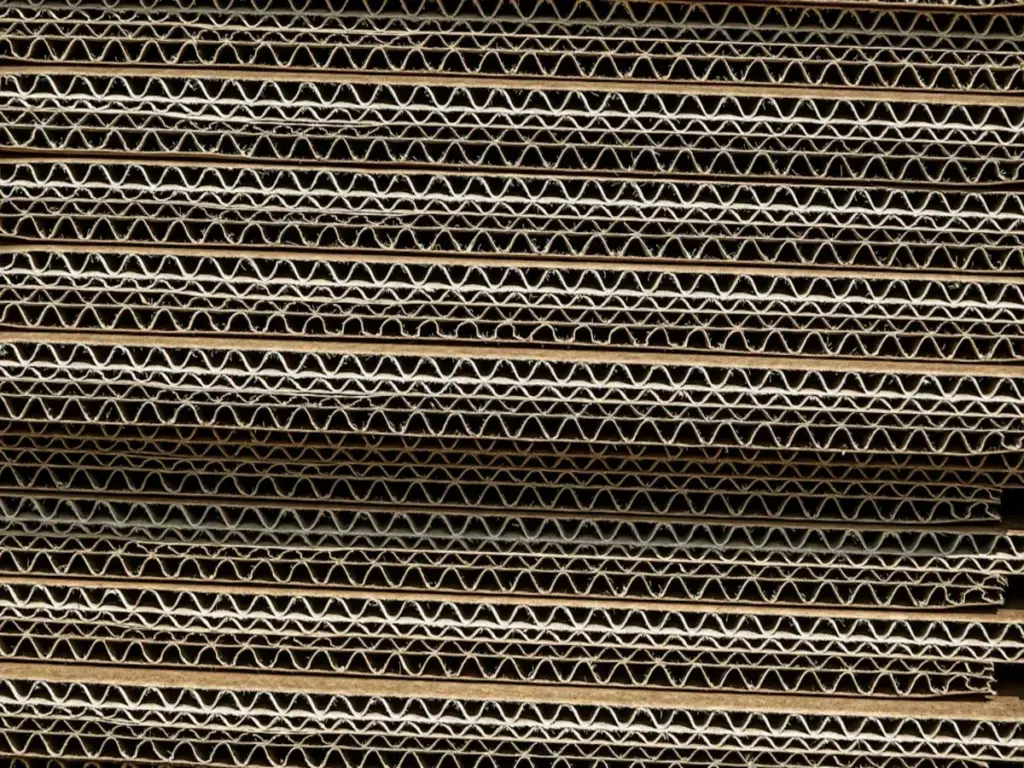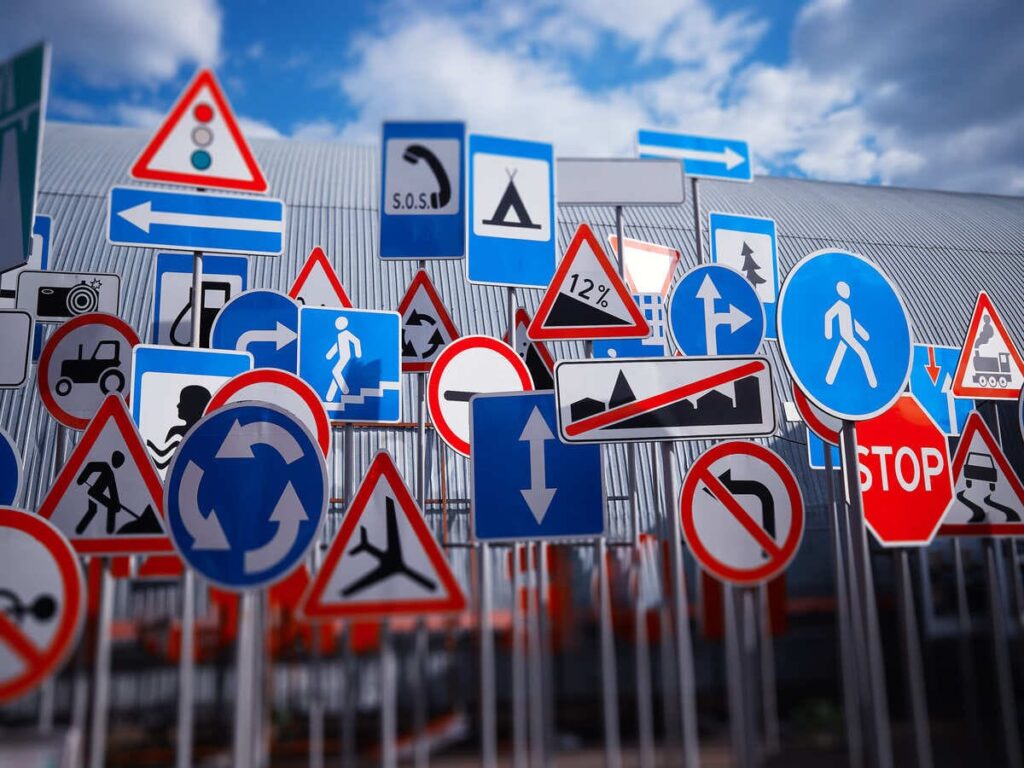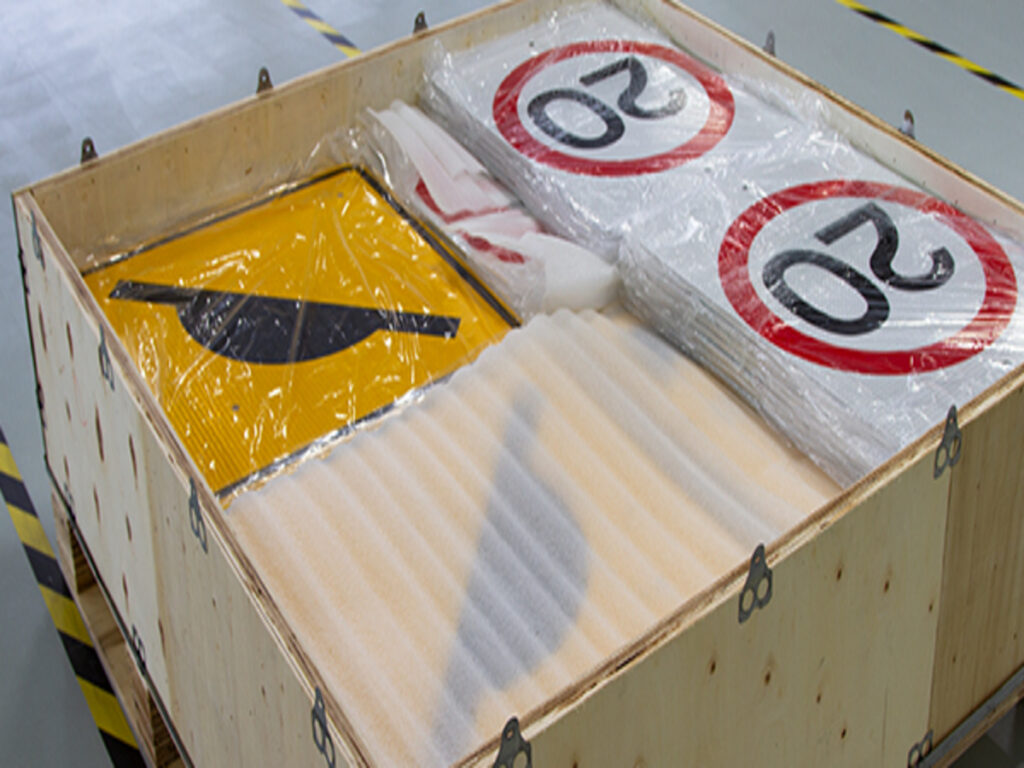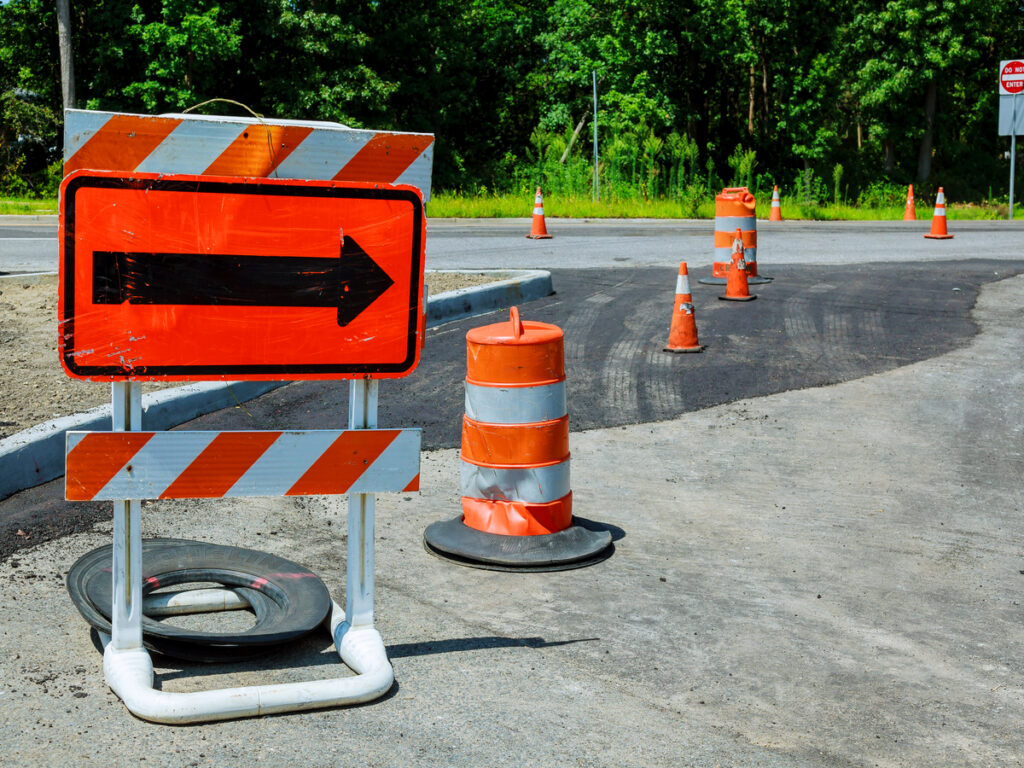
You face serious risks in any ワークゾーン. 以来 2010, work zone deaths have increased by 63%. で 2019, 845 people lost their lives in work zone crashes. Florida alone saw 272 fatal work zone-related crashes from 2016 に 2019. Construction traffic cones help you reduce accident risks and show your commitment to safety. Proper use of cones can help shift liability and protect you when injuries or an accident occur.
Optrafficは高品質を提供します 交通コーン designed to enhance safety in work zones. 耐久性あり, high-visibility options, OPTRAFFIC’s cones for sale help manage traffic flow, 事故を防ぎます, 安全規制への準拠を確保します. By using OPTRAFFIC traffic cones, you can create safer work environments and mitigate potential risks.
キーテイクアウト
- Use construction traffic cones properly to guide drivers and protect workers, reducing accident risks in work zones.
- Follow safety rules and keep detailed records of cone placement to help defend against injury claims after accidents.
- Inspect cones daily for damage or dirt, replace damaged cones immediately, and keep them clean to maintain visibility.
- Place cones at the right height and distance based on traffic speed, and combine them with barriers and signs for extra safety.
- Meet OSHA and MUTCD standards by using high-quality cones and following all regulatory requirements to stay compliant and safe.
作業ゾーンの安全性
Protecting Workers and Pedestrians
You play a key role in keeping both workers and pedestrians safe in every work zone. Many studies show that using protective systems, のように truck-mounted attenuators and concrete barriers, helps reduce the risk of injuries and damages. When you follow traffic control plans and provide regular safety training, you help everyone stay alert to potential hazards. The National Work Zone Safety Information Clearinghouse shares research on how positive protection devices and exposure control measures lower the number of work zone accidents. These tools and strategies protect people from motorist incursions and improve visibility. 視認性の高い服装, regular equipment inspections, and the power to stop unsafe work all add extra layers of safety.
ヒント: Always use physical barriers and intelligent hazard detection systems to shield workers and pedestrians from moving vehicles.
Here is a quick look at some proven safety measures:
| 安全対策 / Topic | 説明 | ソース |
|---|---|---|
| Worker Safety Approaches | Methods to reduce frequency and severity of work-related injuries in work zones. | Colorado Department of Transportation study |
| Fatal Occupational Injuries | Data on fatal injuries at road construction sites, often caused by motorist incursions. | FHWA Fatal Occupational Injuries Data |
| Risk Management Model | Steps to identify, 評価, and reduce risks during highway construction projects. | FHWA Risk Management Model |
| Exposure Control Measures | Physical and behavioral barriers to improve safety for workers and motorists. | Work Zone Safety Clearinghouse |
| Intelligent Hazard Awareness | Systems to detect intruding vehicles and missing control devices for early warnings. | NCHRP Report |
| OSHA Guidelines | Guidance for protecting workers from struck-by hazards in work zones. | OSHA Directive |
Common Construction Zone Accidents
You face many types of construction zone accidents every day. Rear-end collisions are the most common, but you also see sideswipes, vehicle rollovers, and pedestrian strikes. The New York State Department of Transportation found that rear-end crashes happen often in work zones, leading to serious injuries and damages. 実際には, 45% of highway contractors reported a motor vehicle accident in their work zone in the past year. について 43% of these contractors saw injuries to vehicle occupants, そして 16% reported fatalities. 以上 20% of work zone accidents resulted in injuries to construction workers, と 6% causing worker deaths.
- 25% of contractors had to stop construction after an accident, そして 38% of these shutdowns lasted two or more days.
- 74% of contractors support using more concrete barriers to prevent injuries.
- 66% believe that more frequent safety training can help reduce accidents.
You must stay alert to potential hazards, such as high-speed traffic and large vehicles, which increase the risk of severe injuries. Many work zone accidents happen away from intersections, often during tasks like sign installation, フラグ, or debris removal. こういったリスクを理解した上で、, you can take steps to prevent injuries and protect everyone in the work zone.
Liability in Work Zone Accidents
Understanding Liability Transfer
You need to understand how liability transfer works in a work zone accident. When an accident happens, courts look at who is responsible for the injuries or damages. If you follow safety rules and use proper equipment, you can show that you took steps to prevent harm. This can help shift some or all of the blame away from you.
A legal study in the KSCE Journal of Civil Engineering shows that courts use scientific methods to decide who is at fault in construction zone accidents. The study uses a special analysis to separate different types of accidents based on unsafe acts and how organizations manage safety. This helps judges make fair decisions about who should pay for injuries or damages. When you use safety tools like traffic cones, you provide clear proof that you tried to prevent a work zone accident.
注記: Keeping records of your safety measures can help you defend yourself if someone files a claim after a work zone accident.
Strategies for Reducing Risk
You can lower your risk in a work zone by using strong safety strategies. Place construction traffic cones in the right spots to guide drivers and keep workers safe. Make sure cones are visible and in good condition. Combine cones with signs and barriers for extra protection.
Studies show that using risk reduction strategies can cut repair costs by over 40% and reduce the severity of outages by about 50% in critical areas. These numbers prove that planning and using the right safety tools can make a big difference. When you take these steps, you help prevent construction zone accidents and protect everyone from injuries.
- Check your work zone every day.
- Replace damaged cones right away.
- Train your team to spot hazards and respond quickly.
これらの手順に従うことによって, you show that you care about safety and take action to prevent work zone accidents.
Construction Traffic Cones and Compliance
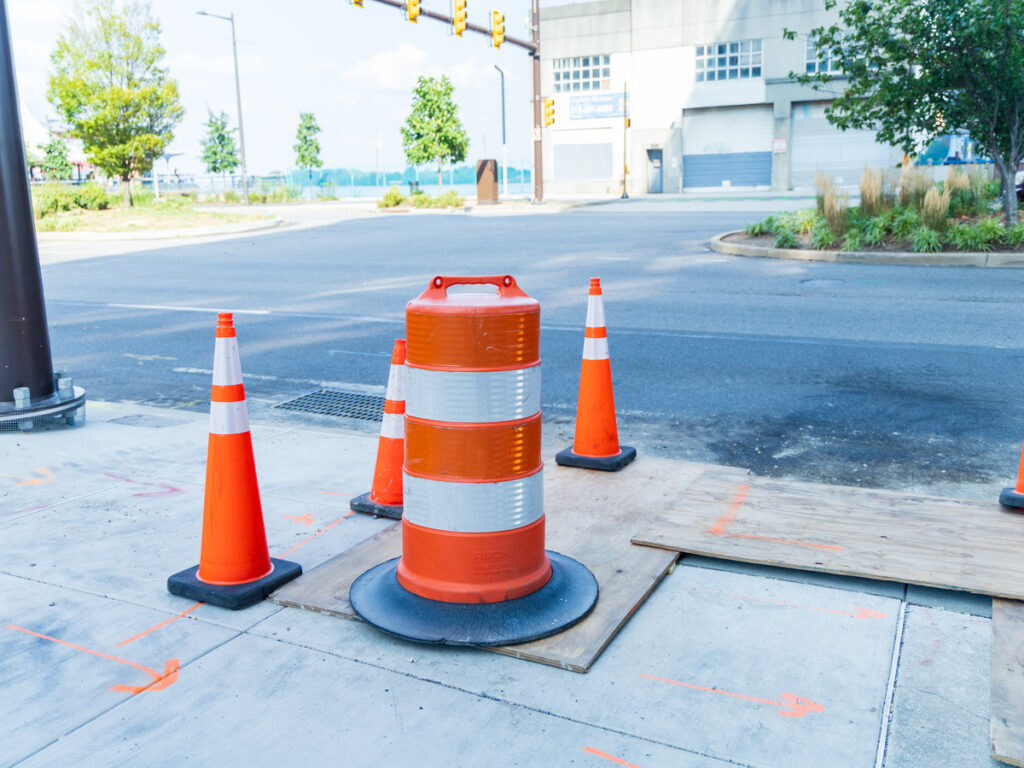
規制要件
You must follow strict rules when you use construction traffic cones in your work zone. These rules help keep everyone safe and show that you care about meeting legal standards. OSHA and other agencies set clear requirements for how you use and maintain cones.
- Construction traffic cones act as safety barriers. They guide drivers and mark off dangerous areas, which meets OSHA’s safety rules.
- OSHA requires you to create a traffic control plan. This plan must include the right placement and use of work zone cones to protect workers and people walking nearby.
- You need to check cones every day. Make sure they are clean, not faded, and not cracked. Workers must know how to use them the right way.
- High-quality cones help you meet OSHA standards. They stay visible in all kinds of weather and light, 事故の可能性を低下させます.
- OSHA says you must place cones correctly. This protects workers and the public and helps reduce your legal risk.
- Durable cones made from strong materials like PVC or rubber last longer. They save you money and help you stay in line with OSHA rules.
The 均一な交通制御装置のマニュアル (mutcd) sets the national standards for traffic control devices. mutcd, along with ANSI/ASSE A10.47-2009, gives you the details you need to make sure your work zone cones meet all safety rules. These standards cover everything from color and size to how cones should perform in tough conditions.
To learn more about traffic cone regulations and how they align with safety standards, ブログをご覧ください OSHAトラフィックコーンの規制とコンプライアンスの完全なガイド. It provides a comprehensive guide on how to ensure your traffic cones meet OSHA requirements and maintain safety in work zones.
事故防止における役割
You use construction traffic cones to keep people safe and prevent accidents. When you place cones in the right spots, you guide drivers away from danger and warn them about changes in the road. This helps stop crashes before they happen.
Work zone cones do more than just mark off areas. They show that you follow safety rules and care about everyone in the work zone. 事故が起きたら, you can use your records and photos of cone placement to prove you took the right steps. This can help protect you from legal claims.
You also lower your risk by using cones that meet all the latest standards. High-visibility cones make it easier for drivers to see your work zone, 夜や悪天候でも. When you keep your cones in good shape, you show that you take safety seriously.
注記: Good records of your traffic control setup, including where and how you use cones, can help you defend your company if someone files a claim after an accident.
Best Practices for Construction Traffic Cones

配置と可視性
You need to place work zone cones where drivers and pedestrians can see them easily. Always use the right cone height for your area. OSHA says you should use 18-inch cones in low-speed zones and 28-inch cones in high-speed areas. Place cones closer together in fast-moving traffic and farther apart in slow zones. This gives drivers enough time to react and follow clear direction through the work zone. Make sure cones stand upright. If a cone tilts, drivers may not see the reflective bands, which lowers visibility. Use cones with diamond-grade reflective sheeting in busy or poorly lit areas. These cones shine brighter and help drivers see the work zone at night or in bad weather.
ヒント: Add flares or lights to cones at night or during foggy weather to boost visibility and keep everyone safe.
Maintenance and Inspections
You must check work zone cones every day. 亀裂を探します, 色あせた色, or dirty reflective bands. Clean cones often to remove dirt and grime. This keeps the reflective bands bright and easy to see. Replace any cones that are damaged or no longer stand up straight. Anchor the base if cones tip over in the wind. Keep a record of your inspections and repairs. Use only cones that meet MUTCD and OSHA standards. Do not mix different types of cones in the same area. Remove cones when you finish the job to avoid confusion.
- Inspect cones for damage or dirt.
- Clean reflective bands to maintain brightness.
- Replace cones that do not meet safety standards.
- Document all maintenance and inspections.
Integrating with Other Safety Measures
You can make your work zone even safer by combining cones with other tools. Use cones with barriers and reflective signs to create strong boundaries. Add portable traffic lights or digital alert systems for extra warning. Case studies show that using cones with portable signals or radar speed signs lowers accidents and improves traffic flow. In one Texas project, combining cones with portable lights cut vehicle-worker collisions by 35%. You can also use cones to mark safe paths for pedestrians during road closures. These steps help you give clear direction and protect everyone in the work zone.
注記: Layering cones with other safety devices creates a safer environment for both workers and drivers.
Using construction traffic cones the right way protects you from injury claims and keeps your work zone safe. Experts agree that well-placed cones guide drivers, prevent confusion, そして、より低い事故のリスク. 新しいテクノロジー, like automated cone systems, also helps keep workers safe by reducing manual labor. When you invest in quality cones and review your safety plans often, you show your commitment to safety. Make cone deployment a top priority for your team and legal staff.
よくある質問
What is the main purpose of construction traffic cones in work zones?
You use construction traffic cones to guide drivers and keep workers safe. Cones mark dangerous areas and help prevent accidents. They show that you follow safety rules and care about everyone in the work zone.
トラフィックコーンを検査および交換する頻度?
You should inspect cones every day. 亀裂を探します, フェード, or dirt. Replace any damaged cones right away. Clean cones often to keep them bright and visible.
Do traffic cones help protect you from legal claims?
はい. When you use cones correctly, you show that you take safety seriously. Good records and photos of cone placement can help defend you if someone files a claim after an accident.
What size cone should you use in different work zones?
You should use 18-inch cones in low-speed areas. For high-speed or nighttime work zones, use 28-inch or taller cones. Always follow OSHA and MUTCD guidelines for cone size.
Can you use cones with other safety tools?
はい! Combine cones with barriers, サイン, and lights for extra protection. This layered approach helps guide drivers and keeps everyone safer in the work zone.


